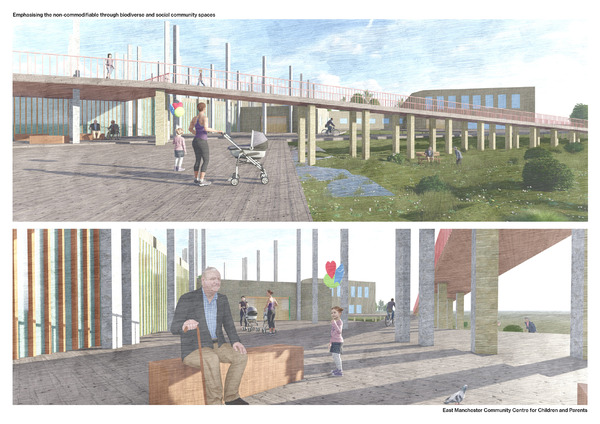East Manchester Community Centre for children and parents : Driven by the existing context of Clayton Vale and RIBA's 2030 climate challenge the proposal adopts a non-human first approach to increasing biodiversity via connecting existing green infrastructure. A scheme which applies natural reclamation, semi managed, and managed community landscapes and then inserts human programme to connect those worst affected by the pandemic seeks to demonstrate that biodiversity can become the most important driver in a project, and the re centring of the human position can provide positive architectural solutions.
The adaptive reuse of the existing modernist abattoir, integrated with a lightweight structure, maximises use of locally sourced, vernacular materials including timber and reed thatch. Reed and timber are re grown and replenished on site to deliver a maintenance programme essential to the projects human use, in a post-human setting the intervention simply degrades becoming habitat for the non-human occupants. The human aspect of the proposal focusses on the post-industrial decline of East Manchester and it's working-class communities, including the nearby districts of Beswick, Bradford and Newton Heath. These areas are most affected by the Covid-19 pandemic and the proposal seeks to create a nursery and off site 'home-working' spaces for those who need it most, in turn reconnecting the fragmented communities that have become disconnected through industrial decline.
My work seeks to integrate optimistic post-war modernist theories and landscape treatment, using architecture as a tool to tackle the climate emergency as opposed to contributing to the problem. Social and biological justice are both key to creating good community spaces. Thinking outside of the role of the architect and adopting the gaze of the user - both human and non-human - in order to find common ground is, I believe, key to developing better, healthier spaces for future generations to thrive.


